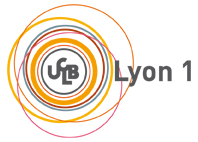preferencebasedpatternminingtutorial
Differences
This shows you the differences between two versions of the page.
| Both sides previous revision Previous revision Next revision | Previous revision Next revision Both sides next revision | ||
|
preferencebasedpatternminingtutorial [2016/09/07 16:50] mplantev [Speakers] |
preferencebasedpatternminingtutorial [2016/09/07 16:53] mplantev [Content] |
||
|---|---|---|---|
| Line 14: | Line 14: | ||
| ===== Tutorial Description ===== | ===== Tutorial Description ===== | ||
| + | ==== Context and Goal ==== | ||
| + | The paradigm of constraint-based pattern mining assumes a strong assumption: the user knows what he/she is looking for and, even more, he/she is able to express queries to pattern mining solvers. In practice, he/she has only a vague idea of what useful patterns could be and it is very hard to derive appropriate queries for the solvers. It explains the growing place of the preferences in pattern | ||
| + | mining. The aim of this tutorial is to provide a comprehensive overview of preferences and relevant methods in the preference-based pattern mining field. | ||
| + | |||
| + | ==== Content ==== | ||
| + | |||
| + | Constraint-based pattern mining is now a mature domain of data mining that makes it possible to handle various different pattern domains (e.g., itemsets, sequences, graphs, dynamic graphs) with a large variety of constraints thanks to solid theoretical foundations and an efficient algorithmic machinery. However, constraint-based pattern mining assumes that the user is able to express what he/she is looking for, requires to finely tune thresholds and the collection of patterns are often too large to be truly exploited. This picture may explain why preferences in pattern mining become more and more important. | ||
| + | |||
| + | |||
| + | Preferences in pattern mining do not come from scratch. In constraint-based | ||
| + | pattern mining, the utility functions finely measure the interest of a pattern | ||
| + | and can be seen as a quantitative preference model. Many other mechanisms | ||
| + | have been developed such as mining the most interesting patterns with | ||
| + | one measure (top-k patterns) or more (skyline patterns), reducing | ||
| + | redundancy by integrating subjective interestingness and then putting | ||
| + | the pattern mining task to an optimization problem. | ||
| + | |||
| + | |||
| + | However, all of the above approaches assume that preferences are explicit and | ||
| + | given in the process. In practice, the user has only a vague idea of what useful | ||
| + | patterns could be and there is a need to elicit preferences. The recent research | ||
| + | field of interactive pattern mining relies on the automatic acquisition of these | ||
| + | preferences. Basically, its principle is to repeat a short mining loop centered | ||
| + | on the user. At each iteration, only some patterns are mined and the user has to | ||
| + | indicate those that are relevant (by liking/ | ||
| + | user feedback improves an automatically learned model of preferences that will | ||
| + | refine the pattern mining step in the next iteration. A great advantage is the user | ||
| + | does not have to explicit her preference model. In addition, each iteration is fast | ||
| + | and it does not overwhelm the user with a huge collection of patterns impossible | ||
| + | to analyze. Interestingly, | ||
| + | user feedback to capture? How to elicit a preference model? How to instantly | ||
| + | mine patterns based on preferences? | ||
| + | |||
| + | |||
| + | ==== Context and Goal ==== | ||
| + | |||
| + | |||
| + | ==== Context and Goal ==== | ||
| ===== Outline ===== | ===== Outline ===== | ||
preferencebasedpatternminingtutorial.txt · Last modified: 2016/09/16 13:32 by mplantev




